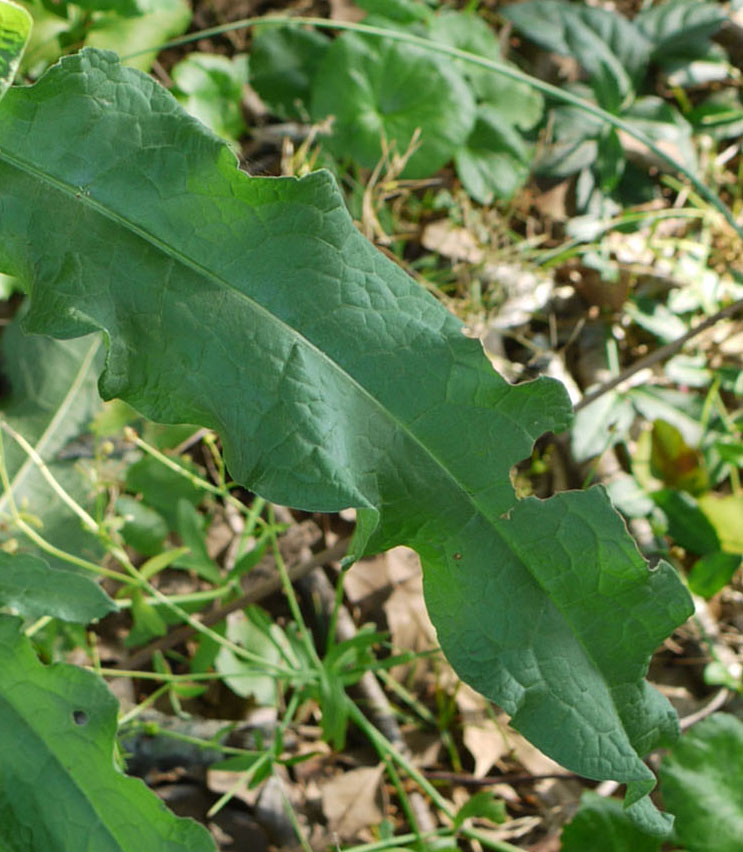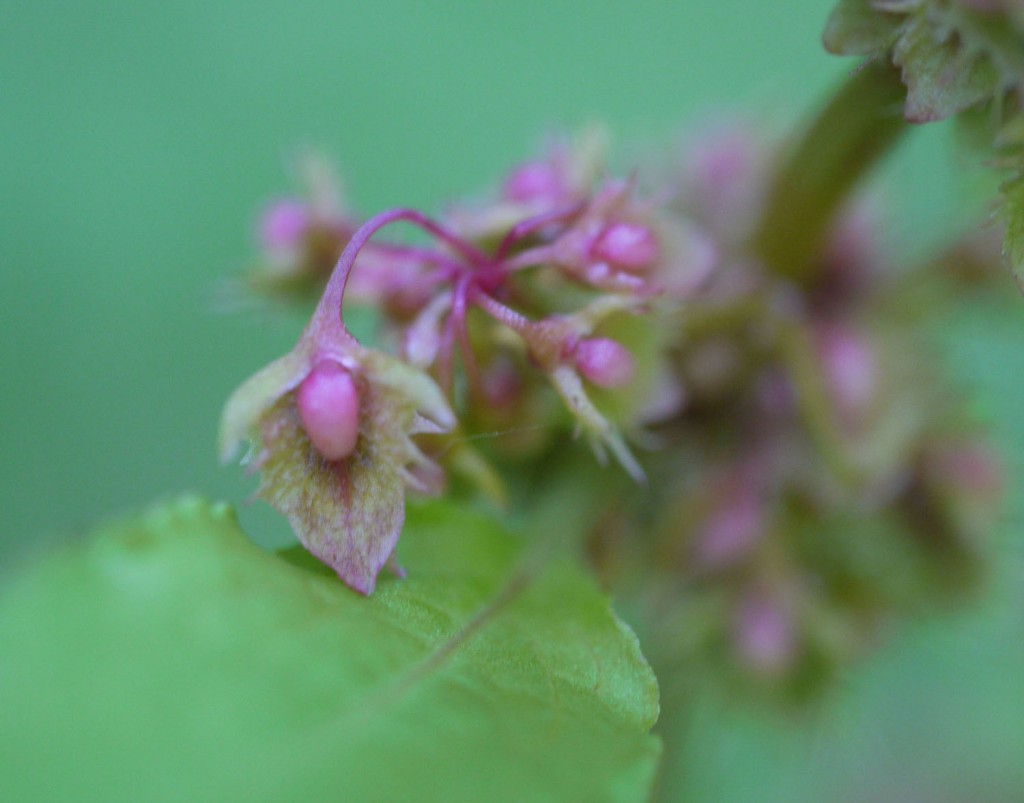Many folks like to use yellow dock to make personal tinctures. There are two species of dock which are both referred to as “yellow dock” and which are both used for medicinal purposes. The common name of yellow dock refers to the beautiful yellow color of the root — visible when you cut into it.
The two species of dock which we’ll review here are Bitter dock (Rumex obtusifolius) which is pictured above and Curly dock (Rumex crispus) which looks like this:
I have found two primary ways to distinguish between these species. The first is the look of the plant’s lower leaves. Bitter dock — also called broad-leaved dock — has leaves which are fairly “flat” across the surface.
Curly dock — also called curled dock — has leaves with lots of “ruffles” across the leaf and along the edges. The leaves are also lance-shaped as compared to the broad leaves of bitter dock.
A second distinguishing characteristic requires you to look very closely at the dock’s seeds (its “fruit”). Bitter dock has sharp points, or spines, on the edges of its fruit’s wings.
Curly dock has wings of the fruit which are smooth-edged — in contrast to its curly-edged leaves.
Since the seeds and seed stalks persist through the winter season, you can identify this plant by the fruit’s wings even in the winter.










So helpful, thanks!
i had stinging netel and dock plant helpd
What kind of doc lives in central alberta ? I found one that tasted like horse radish and one that tasted more like a asperigus. I like the stem of the spicy one.
nice
I love this information, I have been using the local wild garlic here in Tennessee on steaks and trying to find out about more plants that are of use that grow locally. I was looking at tying to figure out pursaline from spurge as well because it was mentioned as a superfood.
Pingback: Sarmice od zelja / Stuffed dock leaves – My Blog
Pingback: Dyeing With Curly Dock Seeds - Salt in my Coffee